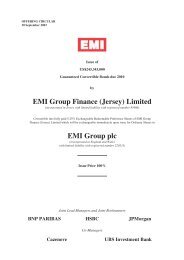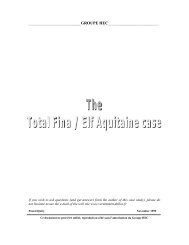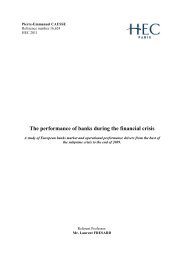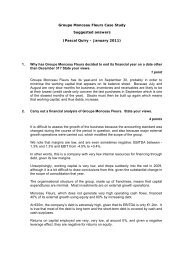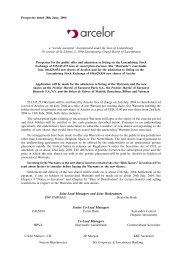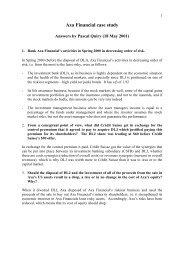Thesis_gd_final_vers.. - Vernimmen
Thesis_gd_final_vers.. - Vernimmen
Thesis_gd_final_vers.. - Vernimmen
You also want an ePaper? Increase the reach of your titles
YUMPU automatically turns print PDFs into web optimized ePapers that Google loves.
US banks decreased by almost 30% 4 . On a longer period of time, from 1980 to 2001, the number<br />
of community banks (i.e. banks with total assets lower than $1 billion) nearly halved, declining<br />
from 14,078 to 7,631. This drop, explained by mergers between community banks, is all the more<br />
impressive as during the same time interval 4,336 de novo banks were created. Assets held by<br />
community banks fell from 34% to 16% of total industry assets (DeYoung et al. (2004)). Even<br />
though most mergers occurred between community and small banks, some of them eventually<br />
lead to the creation of banking giants such as Citigroup, Bank of America or JP Morgan Chase.<br />
This dramatically increased assets concentration in the industry with the share of top 10 banks<br />
going from 20% to 34% between 1988 and 1997, and the share of top 50 banks going from 51%<br />
to 66% over the same period.<br />
Not only did deregulation encourage bank mergers, it also fostered the creation of new<br />
commercial banks. Keeton (2000) and Seelig and Critchfield (2003) suggest that mergers caused<br />
the apparition of new banks. De Young (2003) finds these newly formed banks experienced lower<br />
failure rates over their first few years of existence, but after a while the failure rate increased<br />
significantly and then converged with the industry failure rate. This has also been verified by Jeon<br />
and Miller (2007).<br />
The trend towards a more concentrated banking system has had several major consequences. First,<br />
geographic deregulation engendered a two-tier commercial banking system with a small number of<br />
national and super-regional banks holding most of banking assets and an overwhelming majority<br />
of small and community banks forming a fraction of the banking industry. The size factor is<br />
extremely important as strong growth and creation of large banks through mega-mergers has gone<br />
hand in hand with the apparition of a new business model exploiting the scale economies that are<br />
not accessible to smaller players. Overtime these very large banks expanded into new and more<br />
sophisticated products and activities, while small and community banks kept a traditional role of<br />
intermediation (i.e. collecting deposits and making loans) and limited themselves in most cases to<br />
traditional financial products. Concerning lending, large banks have developed standardized<br />
products based on hard quantifiable information and credit-scoring, while small and community<br />
banks keep offering more customized products by maintaining relationship lending, especially for<br />
small business loans for which soft non-quantifiable information may be more relevant than hard<br />
quantitative data.<br />
Second, the concentration of commercial banking assets among large institutions at the national<br />
level did not have a significant effect on local market concentration. Indeed, Berger and Mester<br />
(2003) report that the average Herfindal index of local deposit market concentration across stays<br />
more or less the same through the 1990s. Thus bank mergers were more likely to be of the out-of-<br />
4 Meyer (1998)<br />
- 8 -



